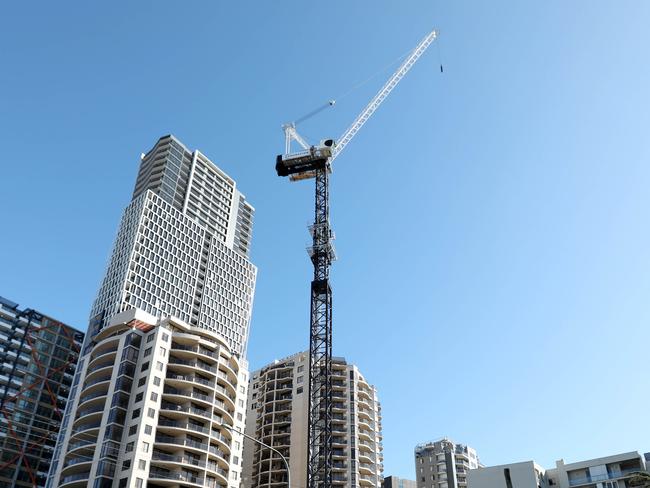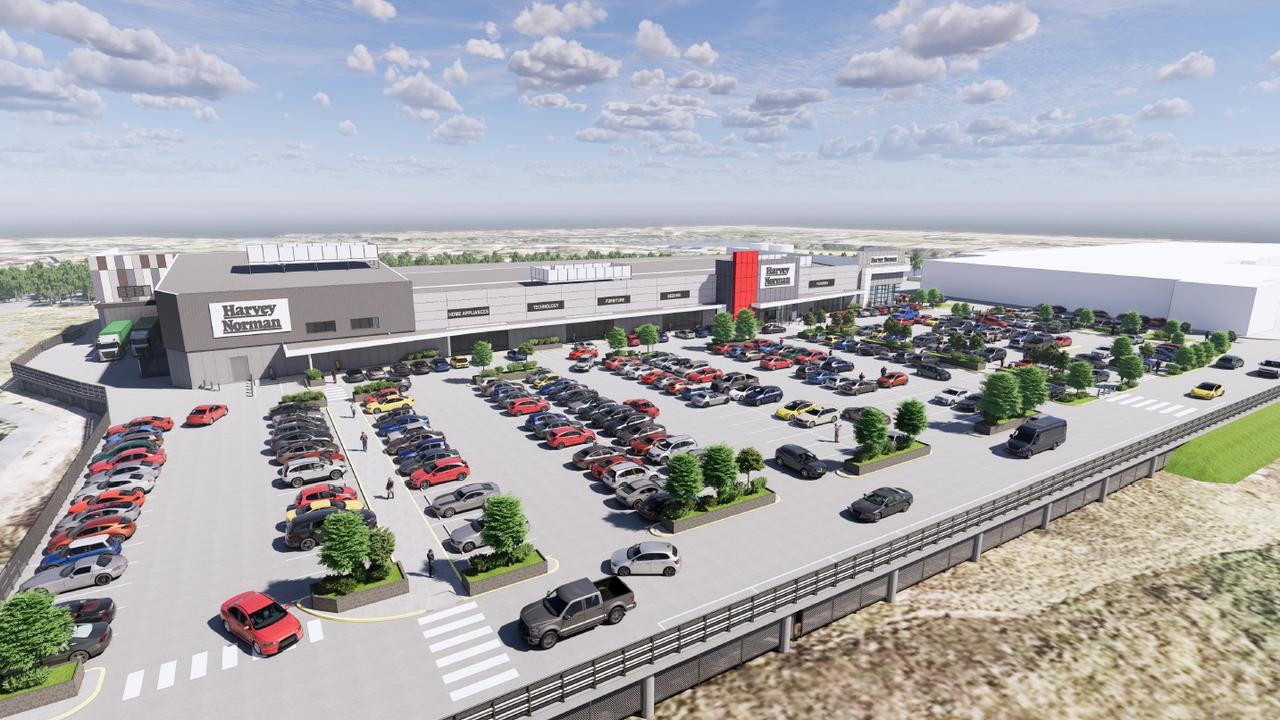How ‘buoyant’ Sydney is leading imperfect housing recovery
A crucial trend has revealed how Sydney is leading the way forward for housing across the country and also given an insight into the city’s turbocharged sprawl.

Property
Don't miss out on the headlines from Property. Followed categories will be added to My News.
Sydney has the most cranes on construction sites than any other city in Australia, with 390 currently across the skyline.
It is down only slightly from the 401 of six months ago, as recent completions saw 172 cranes come down and 161 new cranes appear, according to the latest Rider Levett Bucknall Crane Index.
The Sydney residential sector saw 102 cranes removed and 95 new cranes erected, resulting in 251 cranes. Sydney’s highest residential crane tally was 289 in 2017.
Meriton’s Macquarie Park residential project ranks as the largest worksite with five cranes, while two new cranes have been added to make four at the Tallawong Village project where nearly 3000 apartments are approved for construction by Deicorp.
Sydney has several key government projects with four cranes each including the Powerhouse Parramatta, the Western Sydney Airport at Badgerys Creek, Health Infrastructure NSW’s Randwick campus redevelopment, WestConnex at Rockdale, and the New Sydney Fish Market project in Glebe.

SHIFT IN TREND CONTINUES
The trend of cranes shifting from the CBD and inner suburbs to the mid and outer suburbs continues in Sydney.
The RLB index noted crane numbers in Sydney’s north increased by 11 to 106 across 48 suburbs, overtaking the west which had a fall in crane activity to 95 cranes.
The 36 new residential cranes erected in the past six months in Sydney’s north remain concentrated along the primary arterial routes.
The west saw 15 erected for residential construction, including three at Rouse Hill. Outside Sydney, Newcastle has 16 cranes across the region with new cranes added at Adamstown and Newcastle West. The Central Coast has 12 cranes, as does the Wollongong and Shellharbour region.
The total number of tower cranes across Australian city skylines eased to 869, which RLB suggested was still buoyant.

RESIDENTIAL FALL
It was residential cranes that contributed to the decline, dipping from 553 nationally to 540. The report noted commercial work cranes remained constant at 329.
NSW accounts for almost half of all cranes across Australia; then Melbourne accounts for 22 per cent; and South East Queensland for 18 per cent of all cranes.
“With a 196-crane difference, the gap between Sydney and Melbourne crane numbers continues to be significant,” RLB research director Domenic Schiafone says.
The 194 cranes in Melbourne sees its largest project at Craigieburn for a new Amazon robotics distribution warehouse, with seven cranes, highlighting a new growth opportunity.
The emerging falling volume of building approvals will likely see falling crane numbers into 2025.
But hopefully nothing too abrupt. All those thousands of tradies we see coming and going in their high visibility vests are counting on their next work project to pay their home mortgages.
More Coverage
Originally published as How ‘buoyant’ Sydney is leading imperfect housing recovery





